16. Majorities
Mar 8, 2021
Parallel system vs. distributed system:
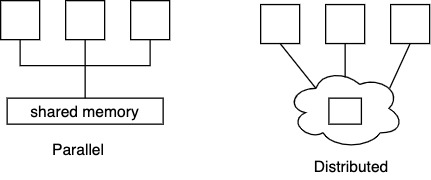
Parallel: memory access operations have no latency (1 cycle) Distributed: no shared memory, uses message passing → memory access latency
Serialization
Consider the following read/write flow - what do the reads return?
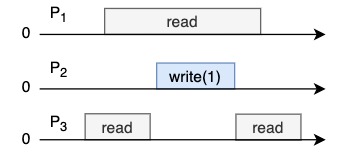
→ depends on what time the serialization points occur
★ = serialization point
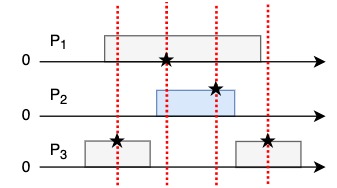
When read is concurrent with write, the read may return 0 or 1, depending on the serialization point
Here is an alternative valid serialization where
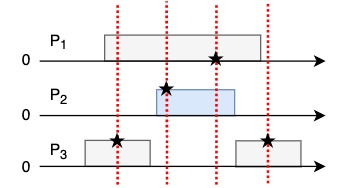
Note that
Operation is atomic when it behaves like a sequential execution. If you generalize this to arbitrary object, it is said to be linearizable (by Leslie Lamport). Lineralizability includes atomicity (subset).
Problematic example
Can this be explained as an atomic execution? Where do serializations occur?
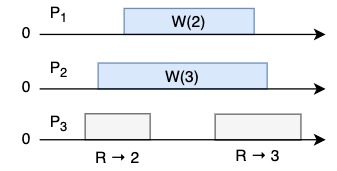
1 | |
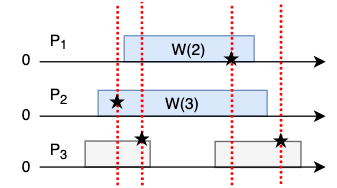
So far OK.
Add two new read processors, can this still be serialized?
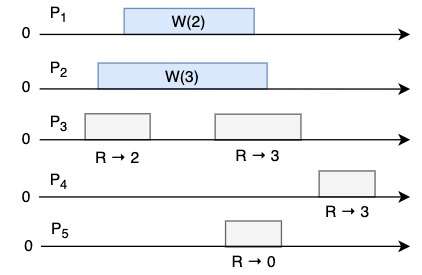
No, because not possible to explain
Reader sees the value that was serialized most recently, otherwise it sees the initial value.
Majorities
Given:
1 2 3 4 5 | |
What is x? Can be anything.
Want a read/write object that is atomic and fault tolerant - obtain atomicity by algorithms and protocols - obtain fault tolerance by redundancy and replication
Consider asynchronous system using message passing. Assume we have
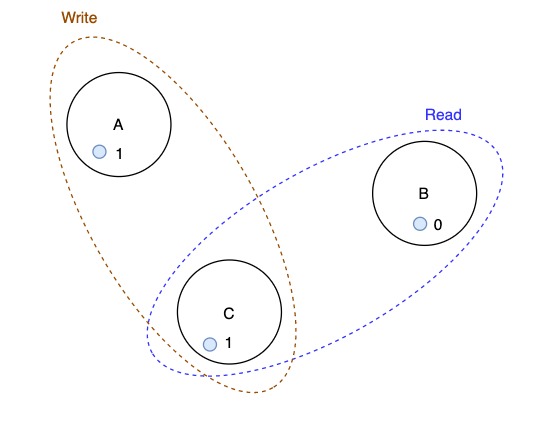
- Use majorities to determine correct value (atomicity)
- tolerates minority failures
- tolerates minority failures
- write reached majority
- read will also see majority and will see value 1
No matter which majority is selected:
- SWMR - single-writer/multi-reader
- MWMR - multi-writer/multi-reader
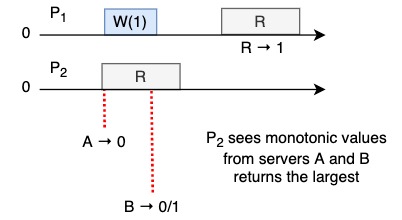
Single writer operation sequence
1 2 3 4 5 | |
Reader operation sequence
1 2 3 4 5 6 7 8 9 | |
Server operation sequence
1 2 3 4 5 6 7 8 9 10 11 | |
(* There is an issue with long writes → readers help writer and broadcast the value 1 — "readers must write". We will continue with this algorithm later to see how this works.)